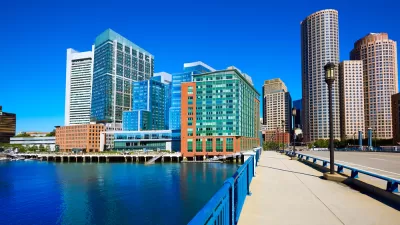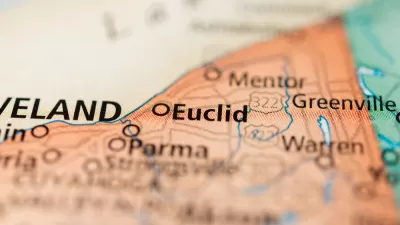Boston would hardly seem capable of resembling "Anytown, USA" but that might be precisely what's happening in the Seaport neighborhood of the city's waterfront.

The list of large investments in the South Boston Waterfront over the past three decades is impressive. An article by Jon Chesto begins by noting all the changes "The cleanup of the harbor. The vast convention center. The Big Dig. And then, after the Great Recession, all the construction, and the new offices it brought."
Yet Chesto also notes that some, like local resident Valerie Burns, have noticed something is still missing: "There are no schools, no library. It’s hard to find a place to play soccer or baseball. And the biggest problem Burns sees? There simply aren’t enough neighbors."
It's true that the area currently has 2,000 housing units—"nearly double the amount that existed five years ago"—with more on the way. Yet "longstanding questions remain about the role housing plays in the city’s waterfront evolution," writes Chesto.
The article provides a lot more detail about the legacy of planning efforts for the area, and how development so far has succeeded, or failed, its expectations for the area.
FULL STORY: Some residents worry Seaport will lack neighborhood feel

Trump Administration Could Effectively End Housing Voucher Program
Federal officials are eyeing major cuts to the Section 8 program that helps millions of low-income households pay rent.

Planetizen Federal Action Tracker
A weekly monitor of how Trump’s orders and actions are impacting planners and planning in America.

Ken Jennings Launches Transit Web Series
The Jeopardy champ wants you to ride public transit.

California Invests Additional $5M in Electric School Buses
The state wants to electrify all of its school bus fleets by 2035.

Austin Launches $2M Homelessness Prevention Fund
A new grant program from the city’s Homeless Strategy Office will fund rental assistance and supportive services.

Alabama School Forestry Initiative Brings Trees to Schoolyards
Trees can improve physical and mental health for students and commnity members.
Urban Design for Planners 1: Software Tools
This six-course series explores essential urban design concepts using open source software and equips planners with the tools they need to participate fully in the urban design process.
Planning for Universal Design
Learn the tools for implementing Universal Design in planning regulations.
Ada County Highway District
Clanton & Associates, Inc.
Jessamine County Fiscal Court
Institute for Housing and Urban Development Studies (IHS)
City of Grandview
Harvard GSD Executive Education
Toledo-Lucas County Plan Commissions
Salt Lake City
NYU Wagner Graduate School of Public Service




























